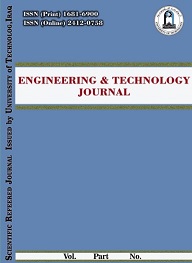Abstract
The study of the separation control using the jet blowing based on the
computation of Reynolds-average Navier-Stocks equations is carried out in this
work. A numerical model based on collocated Finite Volume Method is developed
to solve the governing equations on a body-fitted grid, to compute the
performance of airfoil by using the blowing jet. Above of all, the performance of
turbulence model is investigation. A revised k-ω model is proposed as the known
turbulence models perform well in reproducing the flow of airfoil at pre-stall or
stall angle of attack. The systematical investigation of the jet blowing is conducted
on the NACA 2412 airfoil in the range of attack angle from 0º to 30º included up
and beyond the stall angle at range of Re=3.4*105-1.7*106 . The influence of
some parameters associated with using jet blowing, such as its location, and the
speed ratio (Uj/U) strength on the performance of the NACA 2412 airfoil has also
been studied. The result shows that the jet blowing is effective in controlling the
separation at 0.3C and Uj/U=2. The large separation regions cannot be completely
removed by the jet blowing. However, the flow structure can be regularized. The
lift coefficient of the control airfoil is also increased with the angle of the attack.
The experimental results are obtained on airfoil NACA 2412 at 0.3C blowing and
Uj/U=2, the results are been good agreement with the computational results.
computation of Reynolds-average Navier-Stocks equations is carried out in this
work. A numerical model based on collocated Finite Volume Method is developed
to solve the governing equations on a body-fitted grid, to compute the
performance of airfoil by using the blowing jet. Above of all, the performance of
turbulence model is investigation. A revised k-ω model is proposed as the known
turbulence models perform well in reproducing the flow of airfoil at pre-stall or
stall angle of attack. The systematical investigation of the jet blowing is conducted
on the NACA 2412 airfoil in the range of attack angle from 0º to 30º included up
and beyond the stall angle at range of Re=3.4*105-1.7*106 . The influence of
some parameters associated with using jet blowing, such as its location, and the
speed ratio (Uj/U) strength on the performance of the NACA 2412 airfoil has also
been studied. The result shows that the jet blowing is effective in controlling the
separation at 0.3C and Uj/U=2. The large separation regions cannot be completely
removed by the jet blowing. However, the flow structure can be regularized. The
lift coefficient of the control airfoil is also increased with the angle of the attack.
The experimental results are obtained on airfoil NACA 2412 at 0.3C blowing and
Uj/U=2, the results are been good agreement with the computational results.
